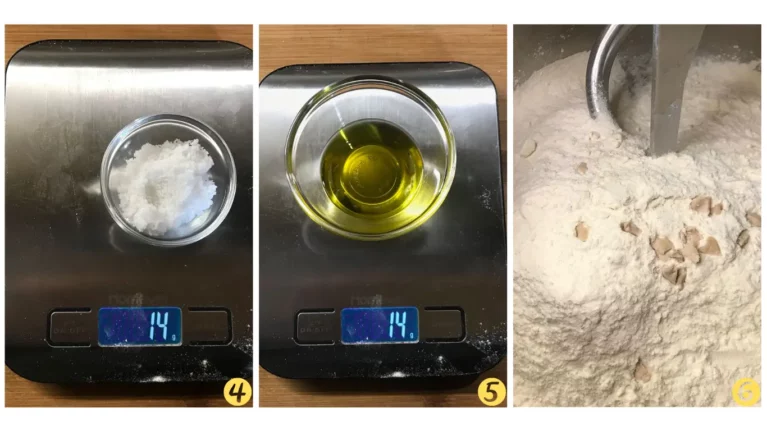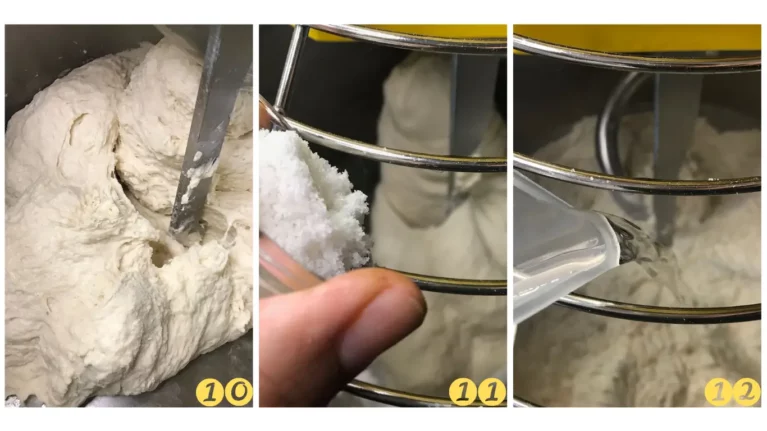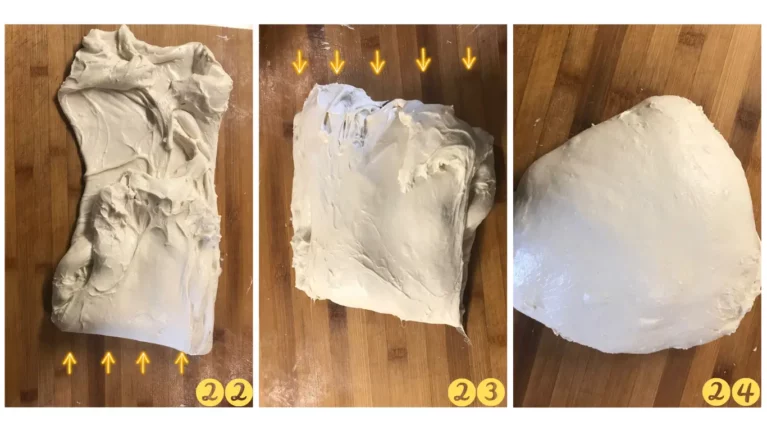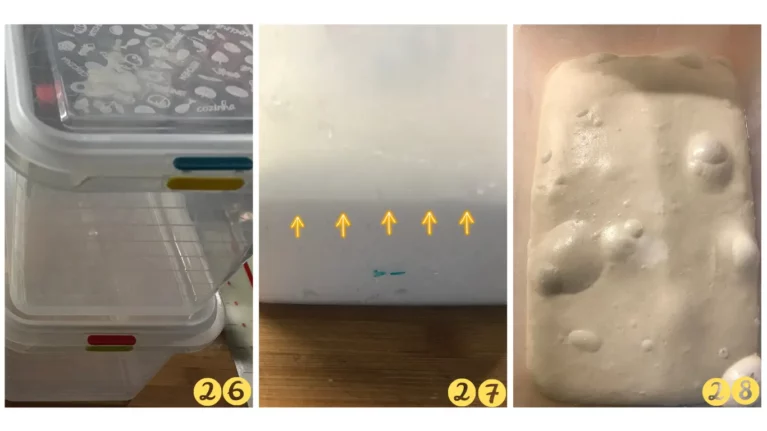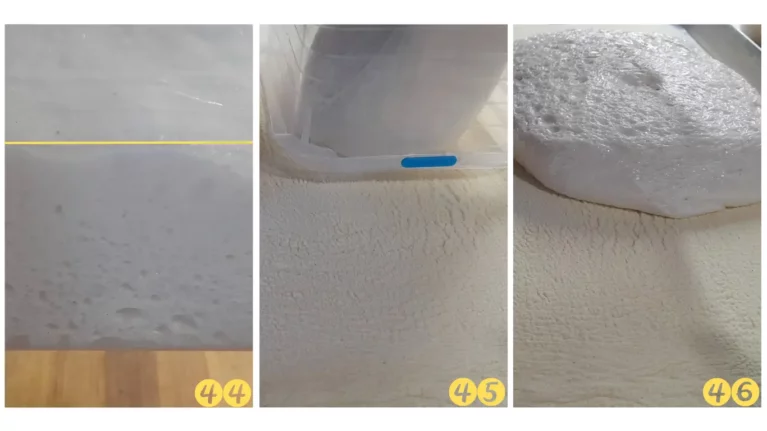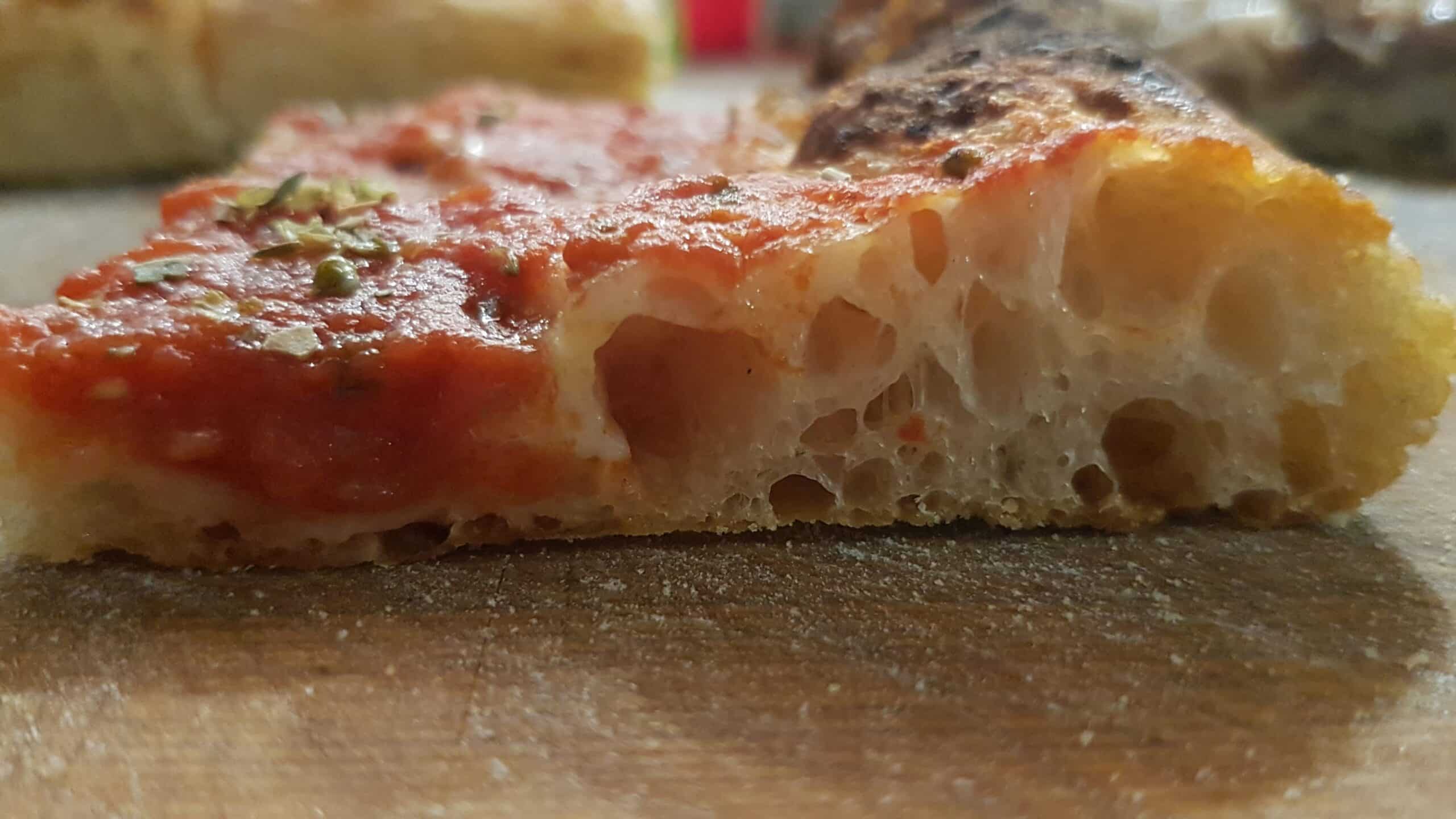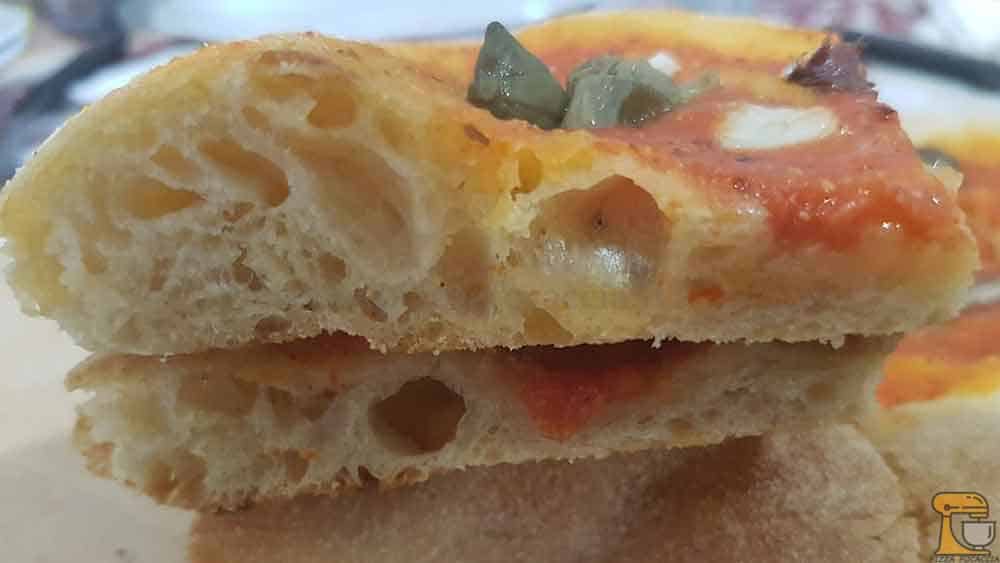
Roman-style pan pizza is a delicious and popular variation of traditional pizza. Characterized by a soft and slightly crunchy base, this pizza stands out for its rectangular shape and for being cooked in a pan.
Its preparation begins with direct kneading, which means that the dough is worked directly without a long leavening period. This method makes it possible to obtain a pizza that is quicker to prepare, ideal for satisfying the desire for a tasty pizza in a short time.
The dough for Roman pan pizza is usually made with flour, water, fresh brewer’s yeast, salt and extra virgin olive oil. The dough is spread in the pan, which can be rectangular or square, and left to rise for a short period of time.
Once the dough has been rolled out, the pizza is topped with peeled tomatoes or tomato puree, buffalo mozzarella or fior di latte, and herbs such as salt, pepper and oregano. Some also add other ingredients such as olives, capers or anchovies to further customize the flavor of the pizza.
The Roman pan pizza is then cooked in the oven at a high temperature until the surface is golden and crunchy. The result is a pizza with a soft and slightly honeycombed base, perfectly combined with the toppings that enrich its flavour.
Roman pan pizza is an authentic Italian specialty, appreciated for its simplicity and goodness. It’s a great alternative to traditional pizza and a treat to savor with friends and family. Experiment with different combinations of toppings and let yourself be conquered by the goodness of this unique pizza variation.
If you like our recipes and if you like, follow us on our FACEBOOK PAGE, INSTAGRAM, to stay up to date on recipes and news!
Here is a recipe for preparing a delicious Roman pan pizza with direct dough:
STORAGE
After letting it rise, you can freeze the pizza dough, preferably portioning it and storing it in freezer bags. Afterwards, just defrost the desired portion at room temperature and continue with the preparation as indicated in the recipe.





Originally posted 2023-05-27 10:59:08.



